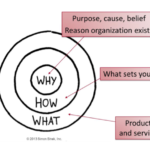Cracking Cultural Change: The Elements of Success
By Helen Windle, IT Service Management Consultant, Pink Elephant EMEA
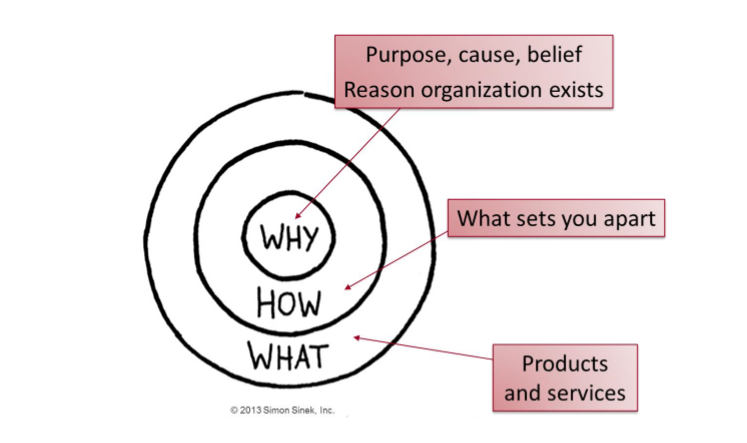
Cracking Cultural Change: The Elements of Success
In my experience there are two trends emerging:
- Start-ups are transitioning from being collaborative organisations to requiring more structure (processes, hierarchy, etc) as they expand.
- Large enterprises are realising that the Red Tape is making them more reactive than proactive when business needs are concerned.
If you are able to gauge where your organisation is in terms of growth, you are better able to project when the next cultural change will hit. The Greiner Curve is a useful tool for this type of exercise as it patents the growth pattern of companies and the associated pain points to come.
Once you have an understanding of where your organisation fits in the grand scheme of things, you can start looking at your change.
The first step to making a change is to establish a need for it.
Using a three-pronged approach I will describe the important elements in successfully cracking cultural change – Vision, People, Reinforcement.
The Vision
Once you’ve established the need, you need to work on your vision.
- Formulate your vision on a “Why” rather than a “How” or “What”.
In DevOps, this concept is known as the Golden Circle. If you have a “Why” reasoning this will have a stronger impact on the decision makers than the usual “How will we do this” or “What we are changing”.
- Establish a sense of urgency aligning with business objectives.
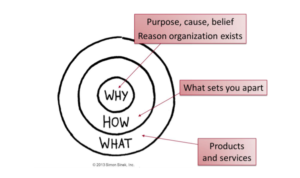
The Vision NEEDS to be aligned to the Business Objectives so that you are moving with the business and not against it – this should be quite a high level decision. You cannot get a plan off the ground without the “Why” and the need to get started ASAP.
Make a Project for this. Do not use the framework used as the “Why” for the initiative and use the idea of the Iron Triangle here look in to Time (aka Urgency), Resources (aka Cost) and Scope (aka Quality) and you need to measure you progress.
The People
Gauge where the people in your organisation will be emotionally throughout the change – and prepare for this using the following:
- The Emotional Cycle of Change: This starts with Shock moving through to Denial, Frustration, Depression, Experimentation and then through to Decision and Integration.
- The ABC – Attitude, Behaviour and Culture of the organisation.
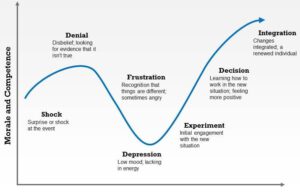
Using the above tools you can start to move towards creating a strategic communication plan.
- Identify ALL Stakeholders and take in to account that there may be parties outside of IT affected by this change
- Identify if new skills will be needed for this to succeed
- Engage and align with HR at the earliest opportunity as roles and responsibilities usually come in to organisational change
- More resource will be needed for this to be successful ensure that headcount comes into the budget
Management and Inter-Team Role Models may be identified, communicate the plan to them in order to engage with the team and identify any issues right at the start – it is a good ABC exercise. This group will need to reconvene in order to maintain consistency.
It is too easy to get caught up in what needs to be said rather than the person on the other end of the information – you will need more than one communication plan, think about users, service providers, partners, managers, even elevator chatter. Consistency is KEY as each audience is different.
Acknowledge that failures may have happened and things still may not go to plan – the why will remain however how to get there may change over time.
Changes to documentation should be recorded – along with policies and procedures – the more visible these changes are the better as confusion tends to lead to failure. The more evidence in writing the better.
Again changes in roles and responsibilities should be clear and documented so that people know where they are and what their responsibilities are.
Reinforcement
Baselines are needed along with panning out where you want to be according to timelines. If you can base this on a model already in place like the Deming cycle so that all areas are covered.
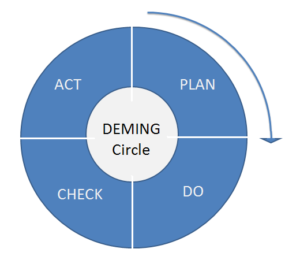
Toolsets – ensure that the tools you are using are appropriate for the changes you are making within your organisation.
You can pick a framework to base your organisational change project on – it often works well depending on your maturity to use a combination approach ie: COBIT and ITIL, Agile/Lean and DevOps to complement each other however again – DO NOT CALL YOUR PROJECT THE ITIL PROJECT, your focus should be on the why.
I’ve recently delivered a webinar on Cracking Cultural Change which you can view for free here: https://www.brighttalk.com/webcast/10001/198411/cracking-cultural-change
Good luck! Thank you for reading!
